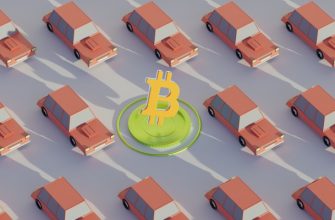- The Rise of Real World Assets: Bridging Digital and Physical Economies
- Key Concepts Explained: What Are Real World Assets?
- How RWA is Transforming Investment Strategies
- The Role of Blockchain in Real World Asset Management
- Challenges and Opportunities in the RWA Market
- Future Trends: The Evolving Landscape of Real World Assets
The Rise of Real World Assets: Bridging Digital and Physical Economies
The emergence of real world assets (RWAs) marks a significant shift in the way digital and physical economies interact. As RWAs gain traction, they provide unique opportunities for investors and businesses alike. These assets encompass tangible items such as real estate, commodities, and even artwork, while being represented in digital formats on blockchain platforms.
This integration of real world assets into the digital realm not only enhances liquidity but also democratizes access to investment opportunities. By tokenizing physical assets, individuals can invest in fractions of high-value properties or commodities, thereby lowering the barriers to entry for a broader audience. This democratization fosters a more inclusive financial ecosystem where diverse investors can participate.
- RWA tokenization allows for fractional ownership, making investments more accessible.
- The liquidity provided by RWAs enables quicker transactions and easier asset transfers.
- RWAs can attract institutional investors seeking stable returns from tangible assets.
- Digital representation of RWAs enhances transparency and traceability within financial transactions.
Moreover, the rise of RWAs facilitates a seamless connection between digital finance and traditional markets. As more businesses and individuals embrace this innovative approach, the landscape of investment continues to evolve. The potential for growth in the RWA sector is vast, with increasing interest from various industries looking to leverage the benefits of blockchain technology for asset management.
In conclusion, the rise of real world assets signifies a pivotal moment in the financial world. By bridging the gap between digital and physical economies, RWAs create a more efficient and inclusive environment for investment. As awareness and adoption of RWAs grow, they are poised to reshape the future of asset management and investment strategies.
Key Concepts Explained: What Are Real World Assets?
Real World Assets (RWAs) refer to tangible and intangible assets that have intrinsic value in the physical world. These assets can include various forms of property, commodities, and financial instruments that exist outside the digital realm. Understanding RWAs is essential for investors and those interested in asset management, as they provide opportunities for diversification and risk mitigation.
RWAs can be categorized into several types, each offering unique characteristics and advantages:
- Real Estate: Properties such as residential homes, commercial buildings, and land fall under this category. Real estate is often viewed as a stable investment due to its potential for appreciation and rental income.
- Commodities: Physical goods such as gold, silver, oil, and agricultural products represent another form of RWAs. These commodities are traded in global markets and can serve as a hedge against inflation.
- Art and Collectibles: Unique items like paintings, antiques, and rare coins can also be considered RWAs. Their value is often influenced by market demand and cultural significance.
- Financial Instruments: Assets like stocks, bonds, and mutual funds can also be classified as RWAs, as they represent ownership or claims on real-world entities.
The significance of RWAs lies in their ability to provide security and stability in an investment portfolio. Unlike digital assets, which can be volatile, RWAs often retain value over time, making them appealing for long-term investment strategies. Furthermore, RWAs can be tokenized on blockchain platforms, enabling fractional ownership and enhancing liquidity.
In summary, Real World Assets encompass a diverse range of tangible and intangible items with inherent value. Understanding the different categories of RWAs allows investors to make informed decisions and leverage these assets for financial growth. Whether through real estate, commodities, art, or financial instruments, RWAs play a crucial role in modern investment strategies, providing opportunities for stability and diversification.
How RWA is Transforming Investment Strategies
Real World Assets (RWA) are reshaping the landscape of investment strategies, offering innovative approaches for diversifying portfolios and enhancing liquidity. By bridging the gap between traditional assets and digital finance, RWAs are providing investors with unique opportunities that were previously unavailable.
One key aspect of RWA is their ability to tokenize physical assets, such as real estate, commodities, and even art. This tokenization process facilitates fractional ownership, allowing more investors to access high-value assets without requiring significant capital. As a result, the investment landscape becomes more inclusive, democratizing wealth-building opportunities.
- Diversification: Investors can diversify their holdings by incorporating a range of RWAs into their portfolios, reducing risk and enhancing potential returns.
- Liquidity: Tokenized RWAs can be traded on various platforms, providing liquidity that traditional investments may lack.
- Transparency: Blockchain technology ensures that transactions involving RWAs are transparent, secure, and immutable, building trust among investors.
- Accessibility: With the rise of RWAs, investors can access markets that were once limited to institutional players, broadening participation in wealth creation.
The integration of RWAs into investment strategies is not just a trend; it represents a fundamental shift in how assets are viewed and traded. With the growing acceptance of blockchain technology, investors are increasingly recognizing the potential of RWAs to transform their portfolios. The future of investing is likely to be heavily influenced by the continued evolution and adoption of Real World Assets.
As the market for RWAs expands, investors must stay informed about the latest developments and opportunities. Embracing RWA can lead to enhanced portfolio performance and resilience in an ever-changing economic environment. Understanding the nuances of RWAs will be crucial for investors seeking to navigate this transformative landscape effectively.
The Role of Blockchain in Real World Asset Management
Blockchain technology is revolutionizing the management of real-world assets (RWAs) by introducing transparency, security, and efficiency. The decentralized nature of blockchain allows for the seamless tracking and verification of asset ownership, significantly reducing the risk of fraud. Real-world assets such as real estate, commodities, and even art can be tokenized on the blockchain, enabling fractional ownership and democratizing access to investment opportunities.
One of the key benefits of utilizing blockchain in asset management is the enhancement of liquidity. By tokenizing RWAs, assets can be traded on secondary markets without the traditional barriers associated with physical asset transactions. This increased liquidity attracts a broader range of investors, allowing for more robust market dynamics and potentially higher valuations.
- Transparency: Blockchain provides an immutable ledger, ensuring that all transactions are recorded and accessible for verification.
- Security: The cryptographic nature of blockchain protects against unauthorized access and fraud, safeguarding asset ownership.
- Efficiency: Smart contracts automate processes, reducing the need for intermediaries and streamlining transactions.
- Fractional Ownership: Tokenization allows individuals to invest in portions of high-value assets, making investing more accessible.
Moreover, the integration of blockchain in real-world asset management promotes regulatory compliance. Smart contracts can be programmed to enforce legal agreements, ensuring that all transactions adhere to relevant regulations. This automation not only reduces the likelihood of human error but also fosters trust among participants in the market.
As the adoption of blockchain technology continues to grow, its impact on real-world asset management is becoming increasingly evident. Investors and asset managers are beginning to recognize the potential of blockchain to transform traditional asset management practices, making them more transparent, efficient, and secure.
Challenges and Opportunities in the RWA Market
The Real World Assets (RWA) market presents a unique blend of challenges and opportunities that stakeholders must navigate. Understanding these dynamics is essential for maximizing potential in this evolving landscape.
- Regulatory Uncertainty: The RWA market faces significant regulatory challenges. Different jurisdictions have varying regulations that impact the trading, ownership, and securitization of real-world assets. Stakeholders must stay informed about compliance requirements to mitigate risks.
- Market Volatility: Economic fluctuations can lead to unpredictable shifts in the RWA market. Investors must be prepared for potential downturns and strategize accordingly to safeguard their investments in real-world assets.
- Liquidity Issues: Some RWAs may suffer from low liquidity, making it difficult to buy or sell assets quickly. This can deter potential investors looking for quick returns, thus impacting market growth.
- Technological Integration: The rise of blockchain technology offers new opportunities for the RWA market. Smart contracts and decentralized finance (DeFi) can enhance transparency and efficiency in transactions involving real-world assets.
- Diverse Asset Class Potential: Real-world assets encompass a wide range of categories, including real estate, commodities, and art. This diversity allows investors to diversify their portfolios and tap into various markets, potentially increasing returns.
- Access to Global Markets: The RWA market facilitates access to global investments. Investors can now explore international opportunities without geographical limitations, broadening their horizons in real-world assets.
- Increased Investor Awareness: As awareness of the benefits of investing in RWAs grows, more individuals are looking to enter this market. This influx of interest can lead to greater demand and innovation within the sector.
In summary, while the RWA market presents various challenges such as regulatory uncertainty and market volatility, it also offers substantial opportunities through technological advancements and increased investor awareness. Stakeholders who effectively navigate these complexities can capitalize on the potential of real-world assets.
Future Trends: The Evolving Landscape of Real World Assets
The landscape of Real World Assets (RWAs) is continuously evolving, driven by technological advancements and changing market dynamics. One of the most significant trends is the integration of blockchain technology, which enhances transparency and traceability in the management of RWAs. As more industries adopt this technology, the potential for RWAs to be tokenized and traded on decentralized platforms increases, leading to greater liquidity and accessibility.
Another key trend is the growing interest from institutional investors in RWAs. As traditional asset classes face volatility, many are turning to RWAs as a stable investment option. This shift is fostering the development of new financial products that utilize RWAs, allowing for innovative investment strategies.
- Increased Regulation: Governments are beginning to establish clearer regulations surrounding RWAs, which will provide more security and confidence for investors.
- Enhanced Data Analytics: The use of big data and artificial intelligence is improving the valuation and risk assessment of RWAs, making them more attractive to investors.
- Environmental Considerations: There is a rising trend towards sustainable and eco-friendly RWAs, appealing to socially conscious investors.
As the market for Real World Assets matures, partnerships between technology firms and traditional asset managers are likely to become more prevalent. These collaborations will drive innovation and facilitate the seamless integration of RWAs into existing financial ecosystems.
In conclusion, the future of Real World Assets is poised for significant transformation. With advancements in technology, regulatory clarity, and shifting investor preferences, RWAs are set to play an increasingly vital role in the global economy. Understanding these trends is essential for stakeholders looking to navigate the evolving landscape of RWAs effectively.









